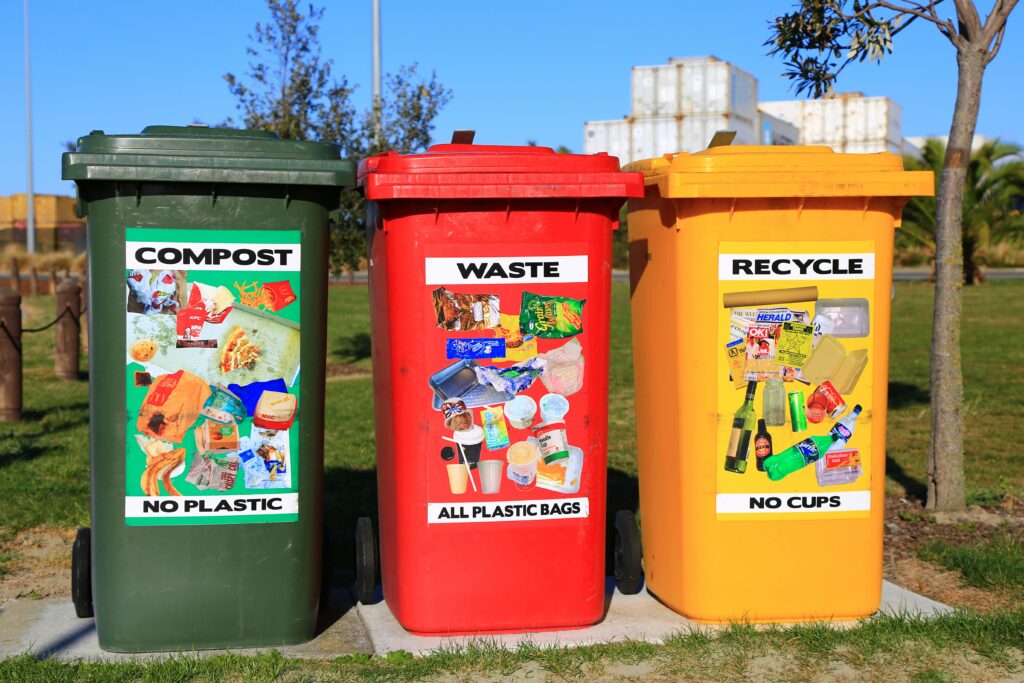Introduction
Embracing an eco-friendly lifestyle is more critical than ever. As the world grapples with environmental challenges, adopting sustainable living practices can play a crucial role in preserving the planet for future generations. By integrating green practices into daily routines, individuals contribute to a healthier environment and enjoy numerous personal benefits. These include:
- Improved Health: Reducing exposure to harmful chemicals by choosing natural products.
- Financial Savings: Lower utility bills through energy conservation and reduced waste.
- Enhanced Well-being: A sense of fulfillment from making conscious, positive choices for the planet.
Adopting a sustainable lifestyle doesn’t mean overhauling everything at once. It involves making small, impactful changes that collectively lead to significant positive outcomes. Explore these “10 Simple Ways to Live a More Sustainable Lifestyle” and discover how easy it can be to make a difference.
1. Avoid Single-Use Plastics

Single-use plastics contribute significantly to environmental pollution, taking hundreds of years to decompose while harming marine and terrestrial ecosystems. Reducing plastic waste is crucial. Simple shifts such as using reusable bags and bottles can lead to impactful change.
- Reusable Products: Opt for items that replace single-use counterparts—canvas totes, metal straws, and glass containers.
- Plastic Waste Reduction: Small efforts add up; encourage others by setting an example with sustainable choices.
These manageable changes foster a healthier environment, emphasizing that collective efforts make a difference in reducing plastic waste.
2. Recycle and Upcycle
Recycling programs transform waste into valuable resources, reducing landfill burden and conserving raw materials. Check your local recycling guidelines to properly sort materials – many communities now accept a wider range of items, from electronics to textiles.
Transform everyday items into practical treasures through upcycling:
- Create planters from old tea tins
- Turn glass jars into storage containers
- Fashion tote bags from worn-out jeans
- Build a bookshelf from wooden crates
- Design wall art from magazine pages
Pro tip: Set up dedicated recycling stations in your home for different materials. Place a paper bin near your desk and a glass container in the kitchen for effortless sorting.
Many local recycling centers offer rewards programs – earn points or cash back while helping the environment. Connect with neighborhood recycling groups on social media to share upcycling ideas and stay informed about special collection events.
3. Reduce Food Waste

Food waste is a significant problem, with about 1.3 billion tons of food wasted worldwide each year, which greatly contributes to greenhouse gas emissions. To combat this issue, here are some practical tips to reduce food waste:
- Effective Meal Planning: Plan your meals weekly to buy only what you need, reducing the chances of unused groceries going to waste.
- Proper Food Storage: Store fruits and vegetables in breathable bags or containers to make them last longer.
- Composting: Turn food scraps into nutrient-rich compost for your garden, enriching soil and closing the food waste loop.
By adopting these practices, you not only save money but also play a vital role in creating a more sustainable lifestyle.
4. Choose a Plant-Based Diet
Adopting a vegetarian or vegan diet significantly reduces one’s carbon footprint. The livestock industry contributes to a substantial portion of greenhouse gas emissions and deforestation. By shifting towards plant-based eating, individuals can lessen these environmental impacts.
To incorporate more plant-based meals into daily life, consider:
- Meatless Mondays: Start with one day a week without meat.
- Explore Alternatives: Try plant-based proteins like tofu, lentils, and chickpeas.
- Creative Cooking: Experiment with global cuisines that naturally emphasize vegetables, grains, and legumes.
These simple changes not only benefit the planet but also promote personal health and well-being.
5. Conserve Energy at Home

Incorporating energy efficiency techniques into your daily routine can significantly reduce your carbon footprint. Simple steps such as using energy-efficient appliances, installing LED lighting, and ensuring proper home insulation can make a big difference. Unplugging devices when not in use and utilizing smart thermostats are also effective ways to conserve energy.
Switching to renewable energy sources like solar panels presents an opportunity to harness clean energy while reducing electricity bills. Solar panels provide a sustainable way to power your home, decreasing reliance on fossil fuels and contributing to a greener planet. Embracing these practices not only benefits the environment but also promotes a more sustainable lifestyle.
6. Save Water with Simple Habits
Water conservation starts with mindful daily choices. A 5-minute shower uses 10-25 gallons of water, while a 10-minute shower doubles that amount. Here are practical ways to reduce water consumption:
- Install water-efficient showerheads and faucet aerators
- Fix leaky taps – a dripping faucet wastes up to 20 gallons per day
- Turn off the tap while brushing teeth or shaving
- Collect rainwater for garden irrigation
- Run full loads in washing machines and dishwashers
- Use a basin when washing fruits and vegetables
- Water plants early morning or evening to minimize evaporation
These small adjustments create significant water savings. A family of four can save up to 18,000 gallons annually by implementing these water-conscious habits.
7. Opt for Sustainable Transportation Choices

Your daily commute can significantly impact the environment. A single passenger vehicle emits approximately 4.6 metric tons of carbon dioxide annually. Public transportation reduces these emissions by 50-70% per passenger mile.
Consider these eco-friendly transportation alternatives:
- Take buses or trains during peak hours
- Join local carpooling groups
- Use bike-sharing programs for short distances
- Walk for trips under a mile
- Combine multiple errands into one trip
Electric vehicles offer another green solution, producing zero direct emissions. Many cities now provide charging stations and dedicated parking spots for EVs, making the switch increasingly practical.
Pro tip: Research your city’s public transit rewards programs – many offer discounted monthly passes or loyalty points for regular riders.
8. Invest in Eco-Friendly Products
The products we use daily leave a lasting impact on our environment. Conventional cleaning supplies and beauty items often contain harsh chemicals that harm aquatic life and pollute water systems. Making the switch to eco-friendly alternatives creates a ripple effect of positive change:
Natural Cleaning Solutions
- Vinegar-based cleaners
- Baking soda scrubs
- Essential oil disinfectants
Sustainable Beauty Choices
- Plastic-free packaging
- Biodegradable ingredients
- Cruelty-free certifications
These chemical-free alternatives protect both your health and the environment. Many eco-friendly products use renewable resources, minimal packaging, and ethical production methods. Brands committed to sustainability often support fair trade practices and maintain transparent supply chains. Your choice to invest in these products sends a clear message to manufacturers about consumer priorities in environmental protection.
9. Engage with Nature Responsibly
Connecting with nature brings joy and relaxation, but it comes with responsibility. The Leave No Trace principles guide us in preserving natural spaces for future generations:
- Pack out what you pack in – carry a designated bag for trash
- Stay on marked trails to protect vegetation
- Keep wildlife wild by observing from a distance
- Use established campsites and fire rings
- Minimize noise pollution in natural areas
Planning eco-friendly outdoor activities enriches both our lives and the environment. Consider:
- Joining organized beach clean-ups
- Participating in native plant restoration projects
- Using biodegradable sunscreen near water bodies
- Taking photos instead of collecting natural souvenirs
- Carrying reusable water containers and snack containers
These small actions create a significant positive impact on our natural spaces while allowing us to enjoy their beauty responsibly.
10. Support Your Community’s Sustainability Efforts
Local action creates powerful environmental change. Your community offers numerous opportunities to make a difference:
- Join neighborhood clean-up initiatives
- Volunteer at community gardens
- Participate in local recycling programs
- Attend environmental town halls
Support green businesses in your area by:
- Shopping at farmers’ markets
- Choosing eco-friendly service providers
- Patronizing zero-waste stores
- Recommending sustainable businesses to others
Create lasting impact by organizing environmental workshops or starting a sustainability group. Partner with schools, libraries, and community centers to spread awareness about eco-friendly practices. Your active participation strengthens local environmental initiatives and inspires others to embrace sustainable living.
Embrace a Sustainable Lifestyle Today!
Living sustainably isn’t just a personal choice—it’s a powerful movement that creates rippling effects across our planet. Each small action, from refusing single-use plastics to supporting local eco-initiatives, contributes to a healthier Earth. These 10 simple ways to live a more sustainable lifestyle demonstrate how achievable green living can be.
Ready to start your eco-friendly journey? Visit OrganicaBay Marketplace for certified organic products that align with your sustainable values. Our carefully curated selection supports both your healthy lifestyle choices and environmental consciousness. Together, we can create lasting positive change—one mindful choice at a time.
Make today the day you commit to a greener tomorrow. Your planet will thank you.

